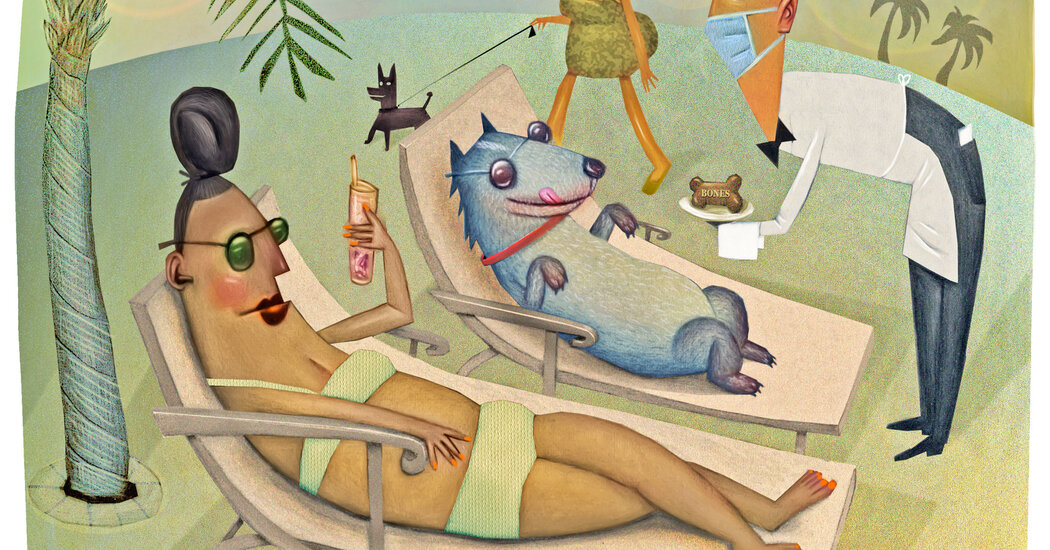If your pet is distressed and whining in its carrier, speak to the animal in a reassuring voice to let it know you are there, said Dr. Bryant, “or give them a toy or calming treat.” The best remedy, though, is prevention, she said. “With proper training, which may take at least six to eight weeks prior to travel, your pet will view the travel crate as their safe haven.”
Make a checklist
The American Veterinary Medical Association suggests packing your pet’s favorite toys, water and food bowls, treats, leash, medication, waste bags, food and any required travel documents. If you are traveling by car, bringing a bed or favorite blanket can make an animal feel more comfortable at its destination and can help avoid stress-induced accidents, noise or destructive behavior.
Withhold the pre-travel meal
If you are worried that stress or motion sickness will upset your pet’s stomach, it’s OK to reduce or skip the last meal before the journey, said Dr. Collins. Keep your animal hydrated, though, with some access to water.
Keep track
Reflective collars personalized with the pet’s name and your phone number can help reunite you if you get separated. Some owners attach an Apple Airtag to the collar. Microchipping pets is very important, said Dr. Bryant. If they are not chipped and they slip their collar, all your contact information will be gone, she said.
Be car-safe
Use a pet harness that attaches to a seatbelt or a carrier for road trips, including in R. V.s, to keep animals safer in case of accident. “It’s imperative they are fastened and secured so they do not become a projectile,” said Ms. Martz, of Sherpa.
Pets loose in the car can also distract the driver. “When Arwin’s not in her crate, she’s trying to climb into the front seat and we have to keep pushing her back,” said Monika Bromschwag, a third-year veterinary student at Cornell University of her boyfriend’s 1-year-old golden retriever. The couple and the dog drove last spring from Colorado to Wyoming.
Click Here to Read the Full Original Article at NYT > Travel…
